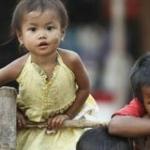- VIETNAM WEATHER
There are no good or bad seasons for visiting Vietnam. When one region is wet, cold or steamy hot, there is always somewhere else that is sunny and pleasantly warm.
Vietnam has a remarkably diverse climate because of its wide range of latitudes and altitudes. Although the entire country lies in the tropics and subtropics, local conditions vary from frosty winters in the far northern hills to year-round, subequatorial warmth in the Mekong Delta.
The South Viet Nam:
With its subequatorial climate, has two main seasons: the wet and the dry.
The wet season lasts from May to November (June to August are the wettest months).
During this time, there are heavy but short-lived downpours almost daily, usually in the afternoon.
The dry season usually runs from December to April. Late February to May is hot and very humid,
but it cools down slightly when the rainy season begins.
In Ho Chi Minh city, the average annual temperature is 27 Celsius degree. In April, daily highs are usually in the low 30s. In January, the daily lows average 21 Celsius degrees.
Average humidity is 80% and annual rainfall average 1979mm.
The coldest temperature that has ever been recorded in HCM city is 14 C degree.
The Central Viet Nam:
The coastal lowlands are denied significant rainfall from the southwestern monsoon(April to October) by the Truong Son Mountain Range, which is very wet during this period. Much of the coastal strip's precipitation is brought by the northeastern monsoon between December and February. Nha Trang's long dry season lasts from late January to October, while Da Lat's dry season is from December to March. Da Lat, like the rest of the central highlands, is much cooler than the Mekong Delta and the coastal strip. From November to March, Da Lat's daily highs are usually in the low to mid-20s.
The cold and wet winter weather of the north-central coastal lowlands is accompanied by fog and fine drizzle.
The North Viet Nam:
Areas north of the 18th Parallel have two seasons: winter and summer. Winter is quite cool and wet, and usually lasts from around November to April. February and March are marked by a persistent drizzling rain that the Vietnamese call crachin. The hot summers run from May to October. The north is subject to occasional typhoons during the summer months.
Best time to travel?
High season for travel in Vietnam, Cambodia is from November through March but if you don't mind a few tropical showers here and there anytime is a good time to visit. As a rough guide the weather is dry and hot throughout the region from November to April except for central Vietnam which can be wet, and northern parts of Vietnam which are quiet cool during the winter months. The rainy season can bring heavy downpours in across most of the region from May through to October but there is also plenty of sunshine between the showers and temperatures are high. The shoulder periods of April/May and September/October, either side of the high season, can be a good time to travel.
- CAMBODIA WEATHER
Cambodia can be visited at any time of year. The ideal months are December and January, when humidity levels are relatively low, there is little rainfall and a cooling breeze whips across the land, but this is also peak season when the majority of visitors descend on the country.
From early February temperatures keep rising until the killer month, April, when the mercury often exceeds 40°C. Some time in May or June, the southwestern monsoon brings rain and high humidity, cooking up a sweat for all but the hardiest of visitors. The wet season, which lasts until October, isn’t such a bad time to visit, as the rain tends to come in short, sharp downpours. Angkor is surrounded by lush foliage and the moats are full of water at this time of year. If you are planning to visit isolated areas, however, the wet season makes for tough travel.
Some visitors like to coordinate their trip with one of the annual festivals, such as Bon Om Tuk or Khmer New Year.
Cambodia is located in Southeast Asia, in the tropical zone, just 10-13 degrees north of the equator. Like most of Southeast Asia, Cambodia is warm to hot year round and the climate is dominated by the annual monsoon cycle with its alternating wet and dry seasons. The monsoon cycle is driven by cyclic air pressure changes over central Asia. As thepressure drops during the summer months (June through October), moist air is drawn landward from the ocean bringing the southwest monsoon rains to Cambodia and much of Southeast Asia. Come the winter months (November through May), the air pressure over central Asia rises, driving cool dry air back across Southeast Asia and bringing on a largely rainless dry season to Cambodia. The mean daily temperature also rises and falls with the winter and summer months, but not exactly in time with the wet and dry season, effectively creating four annual seasons in Cambodia:
November-February: Cool and dry. Average mid-day temperatures in the mid 20s, sometime dipping below 20 at night. The monsoon rains trail off through October and November, and have usually stopped completely by mid November. These months - November through February - are generally considered to be the best time of year to visit, with December and January offering the very best weather of the year across the country - comfortably warm days, clear skies, no rain, light breeze, cool evenings. Ideal beach weather in Sihanoukville. A comfortable time of year to visit the temples near Siem Reap. Temperatures begin to creep up a bit through February and there are occasional, short 'mango showers' in the afternoon.
March-May: Hot and dry. The dry season continues, the only precipitation being short 'mango showers' in the afternoons that slowly increase in frequency and intensity through these months. During these months river and lake levels are very low, generally making boat/river ferry travel much more difficult, less reliable and can greatly increase travels times dramatically. On the other hand, road travel (bus, taxi, motorcycle) is much easier and more reliable for lack of rainy season flooding. The temperature slowly rises through February and March, peaking out in April and May before the monsoons begin. February and March are still comfortable but by April mid-day temperatures can hover in the mid to upper 30s, especially in inland areas like Siem Reap. It is less breezy at this time of year, the sun can be quite intense and the air becomes hazier with the rising humidity. Though sometimes quite hot, the lack of rain still leaves this a good time of year to visit the temples or the beach.
June-August: Hot and wet. The hot season continues but is fairly quickly moderated as the monsoon rains begin in May and June, cooling, if only a bit, the hot, humid air. Across most of the country, the monsoon rains are fairly predictable, usually occurring in the afternoon or at night. And the afternoon rains usually last no more than a couple of hours making them fairly easy to plan around, especially if you are visiting the temples or touring. In fact, the Angkor temples are at their aesthetic best during the wet season. The surrounding moats and reflecting pools are full, the jungle is lush and moisture bring outs the colors of the moss and lichen covered stones of the temples. Boat travel becomes easier and more reliable as the season progresses and the river and lake levels rise, but some roads sometimes deteriorate or become temporarily flooded. The pattern of monsoon rains tends too be different along the coast and the beach towns, where the rains are more frequent and, when the season is at its peak, may last for days at a time, though, unlike the rest of the country, the rain on the coast may stop for days at a time as well.
September-Early November: Cool and wet. The air doesn't really begin to cool much until October or November, but still, its cooler than the hottest months. In September the temperatures hover in the mid 30s and slowly drop through the following months. By October, the mid day temperatures are around 30. In September the rainy season is just passing its peak. The rains are still very regular and intense in September, but by October the frequency is usually dropping off considerably. By the end of October the rains are close to stopping completely, if they haven't already. As the rains end through October, the best time of year to visit Cambodia begins.
The Rainy Season
Many travelers understandably try to avoid visiting Southeast Asia during the wet season, assuming that the rains will spoil the visit. There are obvious disadvantages to visiting during the rainy season, but personally it is my favorite time of year in Cambodia. During the rainy season the temples of Angkor are at their most beautiful and most photogenic. The reflecting pools and moats are full, the vegetation is deep green and the wet stone of the temples is at its most colorful. Also of photographic note, the rain-washed air of the wet season is particularly clear as compared to the hazy, smoky skies of the dry season, making those long shots of the temples and rice paddies that much clearer. (If you always wanted that shot of from the top of Phnom Bakheng of the distant Angkor Wat in the jungle illuminated the light of sunset, this is the best time of year to bring your 400mm lens and give it a try.) Outside the cities, the rice paddies are full of water and green with new rice, the jungle is lush and the countryside is picturesque and alive with growing season activity. The river and lake levels are high making boat travel easy. (It's the best time of year to take the boat from Siem Reap to Battambang, reputedly one of the most picturesque boat trips in Cambodia.) And it must be said that there are fewer tourists in the country. The temples are less crowded, prices are lower and the bars and restaurants are all happy to see you. And, practically speaking, it does not rain all of the time or even every day during the rainy season. When it does rain it usually starts around 2:00PM or 3:00PM and lasts a couple of hours, making it easy to plan around in most cases. Toward the beginning and the end of the season the rains occur with far less frequency.
- THAILAND WEATHER
When is the best time to visit Thailand?
Generally speaking,the best time to visit Thailand is from November to February when the northeast monsoon is blowing cool, dry air which serves as a respite from the heat. During this cool season, the temperature ranges from 18ºC to 32ºC in Bangkok, while in northern and northeast Thailand, temperatures can get quite cool with morning temperatures as low as 8º C to 12º C with the occasional 20º C day. Nights can be particularly chilly and at high altitudes the temperatures can and do drop below freezing.
Hot Season
Expect hot dry weather from March / April thru June / July. Generally, temperatures will reach the high 30's C.. Rainfall is scarce, with some rare exceptions .. such as hailstorms in the North during Songkhran.
Air quality in and around Bangkok deteriorates during the hot season. The Big Mango is not the best place to be during the hot season.
Rainy Season
Some call this the "Hot & Wet" season. The period of time just before a rainstorm can be especially uncomfortable because of temperature & humidity along with the absense of cooling breezes.
Coastal areas and islands may be a bit more temperate, but escaping the heat is not absolute. A shady spot and cool drink is highly recommended. Thailand definately offers some rainy season advantages
Cool Season
"Cool" may be a bit of a misnomer to westerners. Temperatures dip into the 20's, but don't expect frost in the morning. The cool season may well remind you of a warm spring day or a cool summer day. Rainfall is rare .. but tourists are not.
This is Thailand's high season. Resorts in popular destinations fill quickly. Prices increase. Road traffic increases. so are tef and sporadic showers are not While cool seasons tend to avoid some of the discomfort, uring the rainy season season varies a bit questions that travelers ask about Thailand's rainy season is, "Does it rain all day, every day during the rainy season?"
The answer is "No". In fact, many days during the rainy season are completely rain free. This rainy season, Cha am has had very little rain .. actually, not nearly enough.
A common scenario for the middle of the rainy season is a steady downpour at night, clear or overcast mornings and then some rain in the afternoon.
Also very common is one or two days of sunshine between wet days.
When does Thailand's rainy season actually start? In the North, it starts in June. The beginning and ending of the rainy season tends to migrate from Northern Thailand to Southern Thailand with a difference of about one month.
What that means, the rainy season in the North usually ends a month sooner than it does in the South. But then there is a complication in the South .. two rainy seasons.
Should the rainy season in Thailand be avoided? Definitely not. You can look forward to:
Cooler weather
Excellent white water rafting or river rafting
Fresh air and green flora
Avoiding the tourist surge
Cheaper & more available accommodations
So actually planning your travel in Thailand during the rainy season has many advantages. The rainfall washes the dust off the trees and grass and bamboo. The bush is verdant .. rice fields a dazzling green. You awaken to an uncommon freshness in the air.
And if you don't need blazing hot sun to enjoy a beach .. you may find that you enjoy Koh Samui and Phuket even more.
- LAOS WEATHER
Laos has a tropical monsoon climate, with a pronounced rainy season from May through October, a cool dry season from November through February, and a hot dry season in March and April. Generally, monsoons occur at the same time across the country, although that time may vary significantly from one year to the next. Rainfall also varies regionally, with the highest amounts-- 3,700 millimeters annually--recorded on the Bolovens Plateau in Champasak Province. City rainfall stations have recorded that Savannakhét averages 1,440 millimeters of rain annually; Vientiane receives about 1,700 millimeters, and Louangphrabang (Luang Prabang) receives about 1,360 millimeters. Rainfall is not always adequate for rice cultivation, however, and the relatively high average precipitation conceals years where rainfall may be only half or less of the norm, causing significant declines in rice yields. Such droughts often are regional, leaving production in other parts of the country unaffected. Temperatures range from highs around 40°C along the Mekong in March and April to lows of 5°C or less in the uplands of Xiangkhoang and Phôngsali in January.



